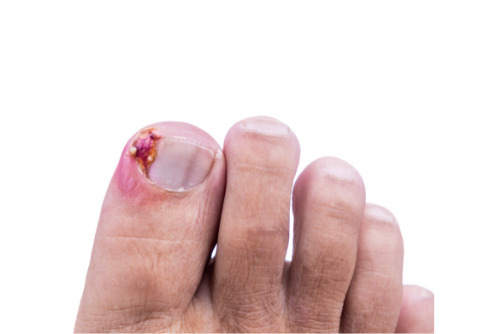Ingrown Toenails
This article does not constitute as medical advice.
If you are experiencing symptoms of ingrown toenails, contact your doctor or make an appointment.
This article does not constitute as medical advice.
If you are experiencing symptoms of ingrown toenails, contact your doctor or make an appointment.
Ingrown toe nails press and push into the skin of the nail grooves, causing pain, swelling, and discomfort. Although any toe nails can be affected, big toes are most vulnerable to this condition. Cutting your toenails incorrectly, wearing tight shoes, and improper hygiene are often causes of this common condition. Teens and young adults are also more susceptible to ingrown nails. You can typically treat this injury from home.
Some people can be prone to an ingrown toenail due to the sports they play, genetics, and other factors.
You can tell you have an ingrown toenail by examining the toe. Unfortunately, symptoms can worsen without proper treatment.
If caught early, you can easily treat ingrown nails from home. However, if conditions worsen or if the nail becomes infected, contact your podiatrist for treatment.
